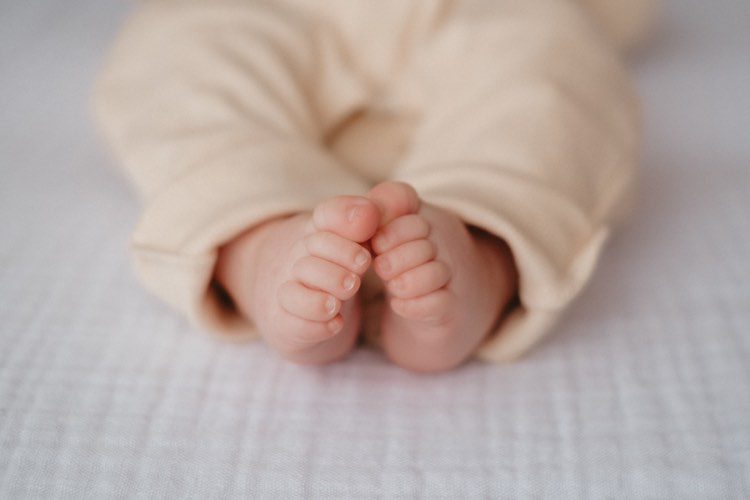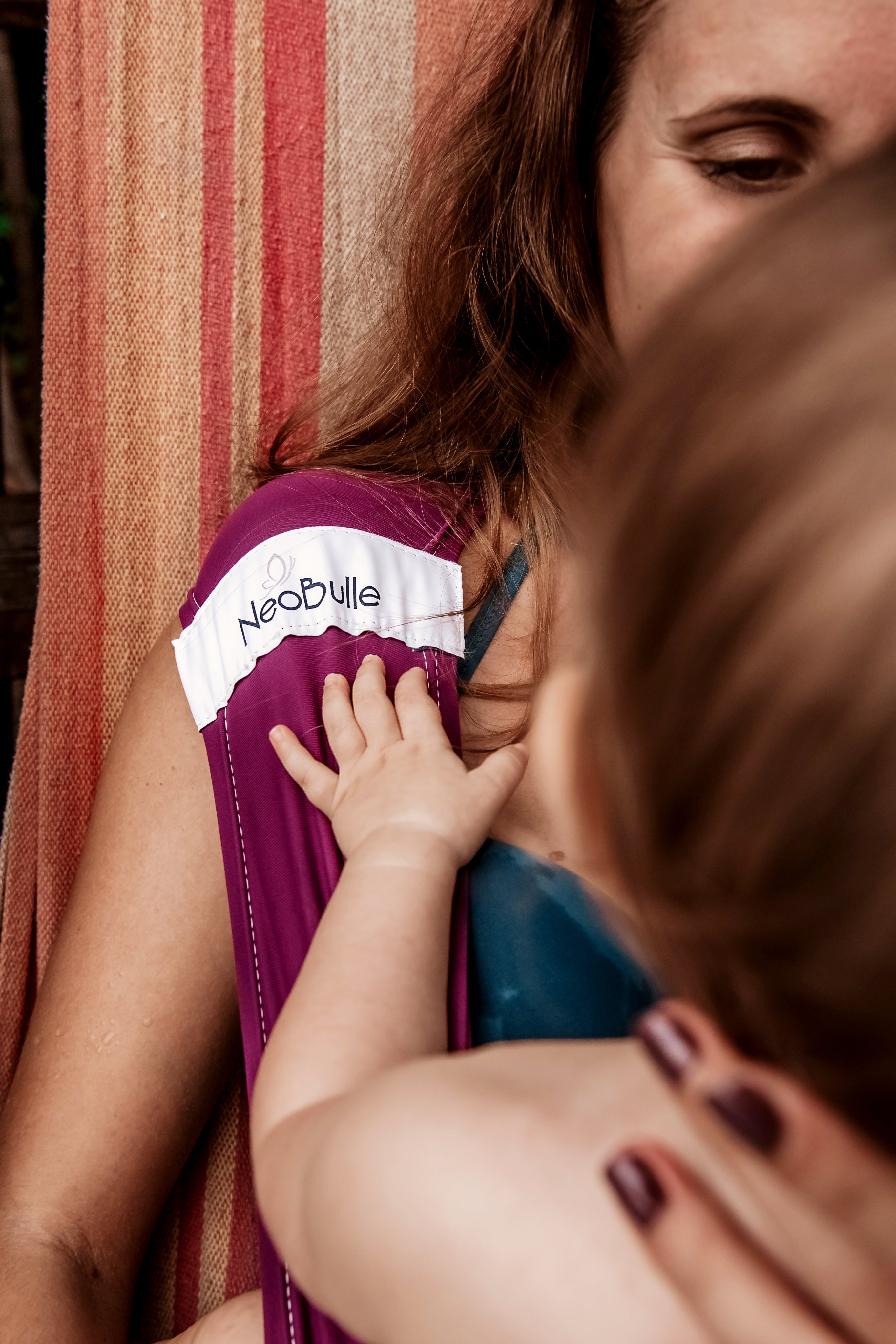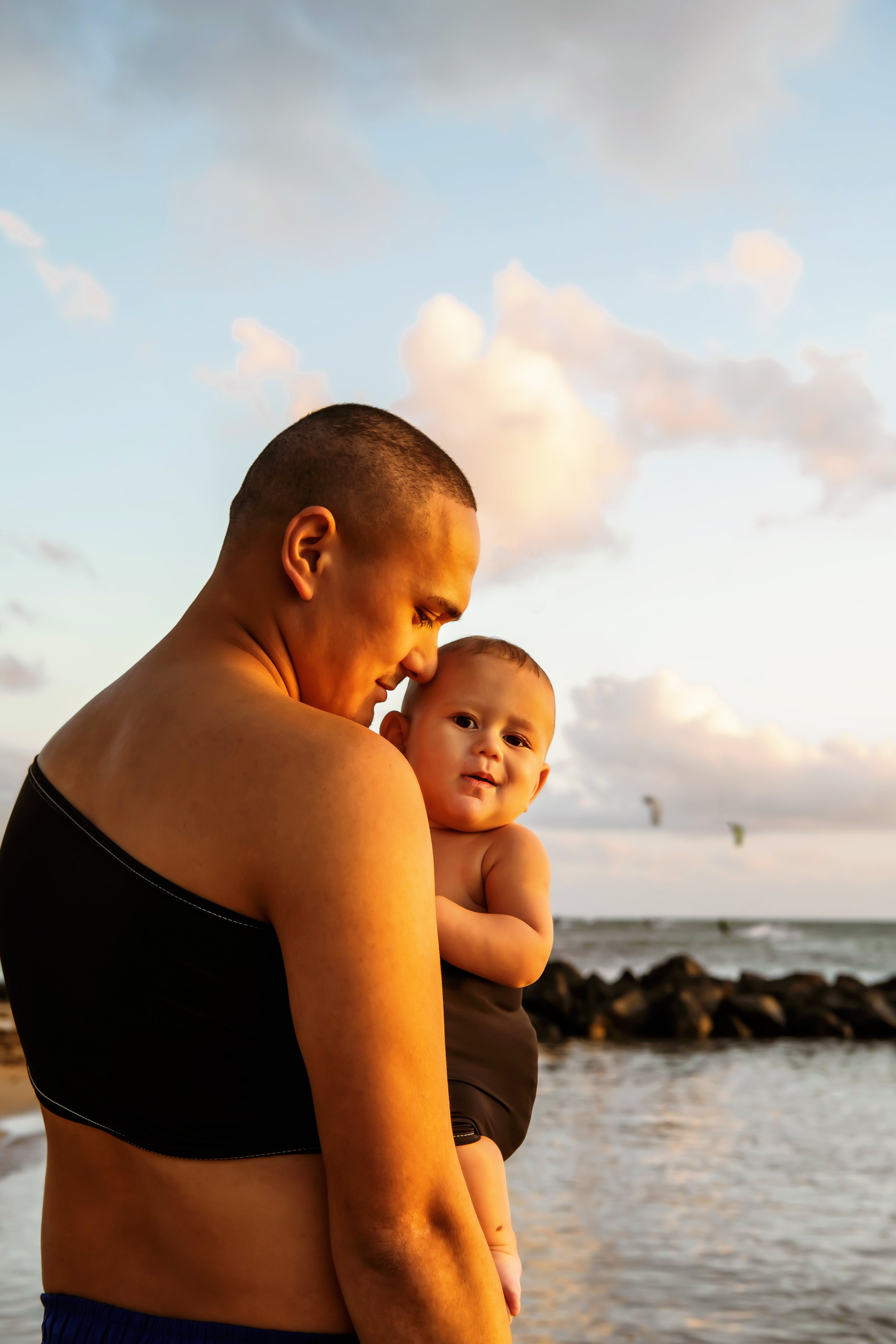
A little slump in your parent role?
Do you also feel it, this routine that exhausts us, this daily grind that bores us? Everything is fine, we lack nothing, baby is in good health. And yet, between diapers, bottles or breastfeeding, laundry, meal preparations, school schedules, and obligations, we can feel that this routine puts us to sleep. So we love them dearly, huh! All of them: the little ones, the big ones, my partner... And despite this powerful love and these countless tirelessly repeated tasks, with baby snug on the hip in a sling , we get bored... and sometimes even, we feel guilty for not doing enough, for not being enough... While we don't stop for a minute! Rest assured: You are not the only person feeling this way This does not diminish your parenting skills The love you have for your family is not questioned You can join a parent support group And yes, I know... We all dream of a bit of adventure, travel, big meetings, our fulfilling great job... But motherhood and cocooning sometimes have this little imprisoning side, which could trap us in feelings of devaluation! Indeed, the society of doing, of doing quickly and showing everything to everyone, does not help to highlight the background work, invisible and repetitive, of a parent, and I would even say, of a mom... The amazing dads, I haven't forgotten you, but I am sure you will agree with me that all these daily tasks are unfortunately still not shared enough within households, and are far too often the domain, not always chosen, of women. This is all the more true during maternity or parental leave. And surely, it doesn't help either, to: Not have time to get dressed before 3 p.m., because baby keeps you busy Have dark circles under your eyes because you haven't had a full night's sleep in months Wear your maternity sweatpants because you haven't found the time to buy new pants Forget the last visit to the hairdresser... Take a shower quietly at 11 p.m. when everyone is finally asleep Never have 10 minutes alone, not even in the bathroom And I forget others! So, when you catch yourself mumbling for the umpteenth time "I still haven't had time to do anything today", know that it's not true! I invite you to list everything you accomplish and achieve during the day, believe me, you will be positively surprised by the result! Think to ask for help from your surroundings Call a resource person who will tell you how fantastic you are And when you start doubting your skills because you just broke the record for changing the 2000th diaper, don't forget that : You are the best person for your child Try to set achievable short-term goals and see them come true And of course: carrying your child can help you (see article all the times carrying saved my life) But giving birth and raising a little being, love and education, takes time! Nature does things without rushing, and yet everything is accomplished. Lao Tzu And in a system where everything goes very fast, where everything changes all the time, we sometimes tend to forget it. Let's try to cultivate values of patience, perseverance, resignation, and ... humor, always. "You are annoyed to launch a new layette machine because baby decided to redecorate all these pajamas in vomit color? Tell yourself that in 15 years, you will be hanging football socks or crop tops to dry!" And ... We can also look at this monotony from a positive angle. Because this dense and ritualized way of life allows us to juggle multiple tasks. A bit of perspective helps us see that we are getting there, come what may, day after day, without failing. And finally, when we realize that not everyone has the chance to live this cozy purr, it becomes much softer, even precious. Cooking is the factoryWhere the day is preparedWe hum, we bottle-feedThe coffee is willing to passBread slices, bootsWe do everything at the same timeWe dress one or two girlsThe day has begunMechanical workIn the morning gesturesThe gestures we know wellIt's nothing, it's daily happiness Anne Sylvestre

Taking a baby on a trip
Dreaming of adventure, travel, hopping into a van for a road trip all around Europe... But your family has just grown and you're not quite sure how to reconcile the two. What if carrying gear was a key element to making your project happen? The quest for minimal clutter Young parents know this: the volume of equipment to bring when you have a baby is ! Whether for a short weekend or a longer trip, renting the necessary semi-trailer to carry the "just in case" gear is generally not part of the plan. So begins the painful sorting process. Some choices are simple, but others are more tricky: the maxi stroller is very comfortable for the baby but takes the space of 3 suitcases. Meaning: you'll have to do without, but you'll need to figure out how, without sacrificing everyone’s comfort. This is where the baby carrier finds its first advantage: Flexible, compact, and lightweight, it easily slips between two bags and takes up almost no space. Remember a weekend in the mountains with 3 children and a dog in a tiny car packed to the brim, where the baby carrier was folded as a blanket over the baby and the sling was worn as a snood around my neck (the stroller, on the other hand, wouldn't fit!). Note that space saving is only effective if you opt for physiological baby carriers: large hiking backpacks with frames, besides being very uncomfortable, don't fold well and also take up a huge volume! A little breeze of freedom Who hasn't found themselves stuck in front of a huge staircase, a cobbled street, or a monument visit where stroller access is prohibited? The baby carrier allows you to face all unforeseen obstacles of your trip without headaches. Baby follows you everywhere, regardless of the terrain! Fancy a spontaneous hike on nearby paths? Just clip it on and go! An inaccessible place for the stroller? No need for a last-minute backup plan, nor the risk of theft if you leave the stroller in designated space. Whether for a day at the beach or a sightseeing tour, thanks to carrying you remain free to move around and can travel anywhere without the risk of getting stuck. Travel with confidence in transportation A suitcase in one hand, the stroller to fold in the other, the crying baby to manage in the middle, and the crowd getting impatient behind (without help, of course, that would be too simple)... Does this situation sound familiar to you? It’s the one that often occurs when trying to take the train with your baby. Sometimes, there are also difficulties when taking the plane, between the oversized stroller that must go in the hold or takes the place of another carry-on bag, and the security checks and waiting time before boarding to manage. Seated in a carrier, your child is secured during various handling procedures, you have free hands to manage a possibly fussy baby, and you can also sneak through the aisles more easily if they need to be rocked. The globetrotting baby For the baby, there are also many advantages to traveling in a carrier! Environmental changes can sometimes be more difficult for some little ones to handle: away from home, they can become nervous, anxious, have more difficulty falling asleep, and their routines and references are disrupted. This is all the more true as the transit places can be noisy and overwhelming (crowds, noise, lights...). Snuggled against you, they are reassured and secured and cope better with the various upheavals. Since tourist sites are often very popular, it’s not uncommon to find yourself right in the middle of a crowd. In a stroller, the child is at knee height of the people, even if you are careful they can be jostled, burned by cigarettes held downward, and the sight of legs pressing around them is clearly not the most pleasant. Snuggled against you, they will feel less overwhelmed by the crowd, and they can also enjoy the visits and panoramic views. For older children, they will also appreciate being able to rest a bit when they are tired. The ideal baby carrier for the little budding adventurer Now that the basics are covered: which carrying system should we put in our travel bag? If you have to choose only one, a preformed carrier is probably the most versatile because it combines both comfort with good weight distribution and the practical necessities of emergency or outdoor setups. It is easy to use for passing airport security or re-installing the baby in the middle of the train aisle upon arrival. Compact and lightweight, it also features a very low volume of bulk. Wrap, sling, and mei-tai They remain choice allies as well but will often need to combine with each other to handle all situations. Being very flexible, they easily slip to the bottom of a bag or between two suitcases and will be appreciated for a more cozy side with a very small one. All that remains is to wish you a good trip!

Essential care for baby
Everything is ready, the nursery, the cuddly toys, and the bag for the maternity hospital… All that's left is to go! And the day of the big meeting arrives! We are amazed by this little bundle… by so much perfection. These tiny fingers with tiny nails at the tips, so delicate… And happiness fills us, we already know each other while discovering ourselves… Breastfeeding begins and sometimes comes with minor tummy troubles: small cries, a tense belly, knees drawn up… Ah ah ah… little colics? That's when I remember that grandma Lison offered me a magical box, she said! Everything for baby’s little bumps, natural and organic herbal potions. I discover Calm Bidou, full of promises just in the name! A tummy massage and sometimes just applying it on the lower back, just above the buttocks, and I see that it soothes quickly. So it becomes a ritual during the first weeks, giving the little intestines time to properly establish their function too! Now, two months have passed with life gently flowing with baby, the routines are taking shape, the rhythm is gradually emerging… It’s time for his big brother to go to school, and here, after two weeks, his nose is running and of course, he transmits some germs to his little sister… And now his nose starts running too… grrrr! Let’s check the magical box from Grandma Lison… Achoo! In addition to nasal irrigation, here’s a new ritual: chest massage or foot sole massage (which is easier depending on how many layers of clothing are on to reach the area 😉). In four days, it’s resolved! Phew! Second challenge, boo-boo overcome! They don’t always tell us everything… But since it’s winter, I continue with one application per day under his little feet, a comforting massage that also helps strengthen his natural immunity to block future runny noses! Six months later, it’s no longer the adorable little baby who doesn’t move… she’s making herself heard! But now, we hear her much better: grumpy, red cheeks, drooling everywhere… I sense the third challenge looming, and not the least: teeth! This is serious business! Disrupted sleep, inconsolable baby… I give a chilled rattle, it helps but it starts again, I need to rotate wisely, always have some ready, a real race against time! Hey, First Teeth … I had forgotten the magic box offered by Grandma Lison… and here it is really magical! Immediate relief. A drop on the finger (so practical to put on) and my finger massaging the gum (and sometimes getting crushed by the pitbull marchers of Miss), several times a day, and you can really feel that it does good! We don’t quite get through it… The first tooth cuts through after a few days, with the smile and sleep restored! This product is so great, it relieves pain, softens the gum, and allows the little teeth to push through in relative calm… 9 months… "Look darling, she’s really gotten the hang of crawling, she’ll be walking soon!" But don’t expect everything… and bam… the table leg right in the forehead and the first bump! This time all the magic sticks are ready to draw—Bam! I just put it on the emerging bump and the magic again… Baby relieved resumes exploring, and miracle—after a few hours, the bump diminishes after two applications, and not even a bruise! It remains to test the Little Bobo (the second emergency stick from the magic box offered by Grandma Lison)… And it was his big brother who gave it to him a few days later by falling flat on his stomach at the square: screaming "maman…", scraped knees, tears streaming down his cheeks… With my square nurse diploma in hand, I take out a small tissue to wipe the gravel and my Little Bobo roll because it doesn’t sting, it relieves, cleans, and PLUS, he can put it on all by himself like a big kid! This also greatly limits the tears!!! Little Bobo and Bam-Bam will become essentials in my bag and on our outings because bruises, bumps, small burns, blisters, and scratches won’t last long! So thank you Grandma Lison for introducing me to magical herbal potions to soothe my two mischievous treasures because we are quite unprepared for these everyday little injuries… unfortunately, we don’t have parenting classes to manage all the hazards of our new role 😊! And it’s still much better to work with natural resources when possible… especially when you see how well she made the tiny fingers of our little one… https://www.youtube.com/watch?v=BQE5Wr4XvVc

Everything to know about skin-to-skin contact
It has long been a tradition to wrap the baby in a cloth before handing it to the mother after birth. But this trend is giving way to skin-to-skin contact. The practice involves placing the baby, nude or in a diaper, directly against the mother’s chest. It is not uncommon for skin-to-skin contact to be offered to the father when the mother is unable to do it herself. It is also called the Kangaroo method. So, is it a passing trend or a recommended practice? And why practice skin-to-skin contact? How is "nurturing" skin-to-skin contact? It was in Colombia, 40 years ago, that Dr. Edgar Rey Sanabria imagined warming premature babies by placing them, undressed, against the bare chest of their parents. The practice has existed for a long time. However, it has only recently been adopted by French maternity wards. How to practice skin-to-skin contact? Baby must, of course, be undressed initially. Usually, their diaper is left on. Their chest is placed on the parent’s chest, who has previously undressed their torso. Their head must be free to breathe comfortably. They are generally covered with a sheet and a blanket so they don’t get cold. Skin-to-skin contact can be practiced sitting or standing. To do this, you will choose a carrying sling made of Oeko-Tex cotton (a fabric free from pollutants, heavy metals, and toxins). Similar to a physiological baby carrier, it adapts to all body types and allows you to keep the baby comfortably against you, safely. Neobulle offers several models of slings, including the without knot sling My Sling Jersey. Why practice skin-to-skin contact? Calming the baby Practiced immediately after birth, skin-to-skin contact, as we mentioned, has the advantage of warming the baby. Indeed, against the parent’s chest, the baby regulates its temperature and, at the same time, stabilizes its heart rate. Through this practice, it also regulates its breathing. Skin-to-skin contact even helps increase its blood sugar levels! Later, the kangaroo method is reputed to calm the baby’s cries. Studies have shown that babies practicing this method cry much less than those placed in their cribs. Reassuring the baby Childbirth is a test for the mother… but it is also for the baby. The transition from the mother's womb to open air is the first great adventure of their life! No more the comfort of a warm, cozy belly! When born, baby loses their bearings and needs to be reassured. This is why the first skin-to-skin contact is important for baby. It reconnects them with the heartbeat of the person who carried them for months, it hears the familiar voice of mom or even, dad. And then the warmth of the parent's body helps to reassure them! All these "little details" allow them to enter their new life more gently. Reassuring parents It's not only baby who is soothed by skin-to-skin contact! Parents who practice it also feel a sense of calm. In the practice of the kangaroo method, an increase in oxytocin, the "love" hormone, is observed. This hormone has the ability to soothe and release anxieties. And it is scientifically proven! Skin-to-skin reduces parental stress! This close contact with baby may even promote the production of endorphins, hormones secreted by the brain that are known to create a sensation of euphoria. Facilitating breastfeeding The hormones produced during skin-to-skin offer a feeling of well-being that helps to strengthen the parent-child bond. Oxytocin, in particular, already produced by the mother throughout pregnancy, contributes to the production of breast milk. The milk let-down reflex is thus promoted after birth. Skin-to-skin also helps to maintain lactation afterward. Practicing the kangaroo method from birth finally promotes the baby's instinct to find their mother's breast! Developing the child's immune system Skin-to-skin truly has more than one trick up its sleeve! It also has the recognized ability to develop the baby's immune system. And this is important because it will help limit the infection rate they may face. * Beyond the practice carried out immediately after birth, skin-to-skin retains all its benefits for months! That is why it is important to continue practicing it upon returning from the maternity ward and until the baby is 12 months old. A way to continue fostering calming exchanges between parent and baby! The first months with baby will be all the sweeter!
Pregnancy and childbirth
How to take care of your perineum? This is a highly important topic for a woman's life. The perineum is a universe in itself, comprising a constellation of muscles and ligaments that are particularly stressed during pregnancy. This precious instrument deserves special attention during these 9 months. The benefit of taking care of it is mainly to avoid long-term problems, and to greatly reduce the chances of episiotomy or tearing during childbirth. Your perineum, your pregnancy, your baby… and your woman’s life Your perineum supports the weight of your uterus, baby, and amniotic fluid. Under this constant pressure, all these ligaments and muscles stretch and lose their elasticity. Especially if you are expecting twins. When the baby is born, your perineum will need flexibility and tonicity. Pelvic floor re-education is often discussed. It is usually necessary, but if your perineum is too damaged, it will not regain all its capabilities. The perineum, when it has lost its elasticity, is the origin of incontinence, a taboo subject that is rarely discussed. Yet, it is a fairly common problem among women. Not to mention that the perineum plays an important role in sexual pleasure. Physical activities? Yes, but gentle ones… If you have chosen prenatal yoga as a preparation for childbirth, you are already taking care of your perineum. If you have chosen swimming, that’s pretty good too. And if you regularly walk, it’s even better! Generally speaking, gentle physical activities that involve breathing and the pelvis are recommended. Especially since they are good for morale and gradually prepare the rest of the body for childbirth. However, some sports should be avoided. Especially those that exert natural pressure on the perineum. All jumping sports are broadly discouraged for pregnant women. Aerobics or long-distance running are also not in their favor. If you ever need to carry heavy loads at work, or are used to carrying your older children, it’s best to delegate. Colleagues, friends, or loved ones… A little help? Exercises, from the fourth to the eighth month At the beginning of the second trimester, preparation sessions for childbirth begin. The midwife raises awareness about the perineum and gives you some advice. This is a good opportunity to ask questions. Practicing these exercises regularly will be key. Massages, starting from the seventh or eighth month But how to massage the perineum? We provide the instructions right below! First, wash your hands to avoid germs. Take advantage of this opportunity to enjoy a few minutes of calm conducive to relaxation so you won’t be disturbed. Whether kneeling or lying in bed with your back against the wall, sit comfortably to start the massage, which, to be effective, should last 5 to 10 minutes. Now is the time to take the massage oil. With your thumb turned and pressed down towards the bottom of the vagina, perform rocking movements from left to right, then from right to left, applying enough pressure. Don't hesitate to watch videos online. During the last two months before the baby's arrival, it is recommended to massage yourself 2 to 4 times a day. This will REALLY make a difference during childbirth! To assist you, we have designed Néobulle's perineum oil, studied to take care of your perineum before and after pregnancy. After birth, exercises again One or two months after the birth of your beautiful baby, the postnatal consultation allows you to check in with the midwife or gynecologist. They will prescribe about ten sessions of perineal re-education. Moreover, even in the case of a C-section, re-education is recommended. While waiting for this appointment, you can start gentle exercises to do alone for a few minutes each day. Sitting on the edge of a chair, start by inhaling through your nose, then contract your anus, vagina, and abdomen one after the other for about ten seconds before exhaling. It's a good way to get back on track and reconcile with your body. Néobulle perineum oil At Néobulle, a brand committed to the well-being of babies, a massage oil has been created that expectant mothers love, especially for its pleasant smell and effectiveness. This 100% natural and organic soothing oil prepares expectant mothers for the birth of their baby. It softens the perineum to facilitate the passage of the little one by increasing the effectiveness of massages. After birth, the passage of the baby sometimes causes a small swelling (edema), painful scratches, a small tear, or even an episiotomy. Néobulle oil, used at this moment with gentle application and not massage, provides relief and quick healing. In case of C-section, it helps to heal and fade hematomas if present. An essential to have!




